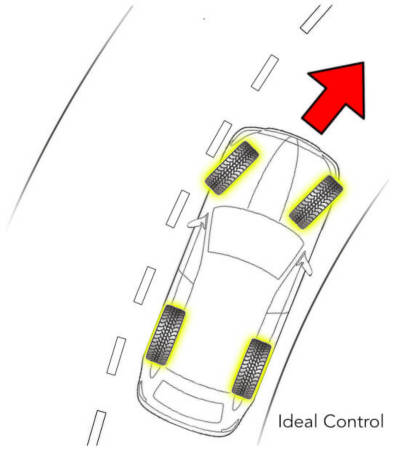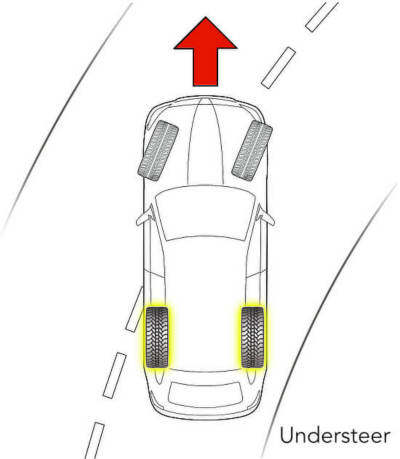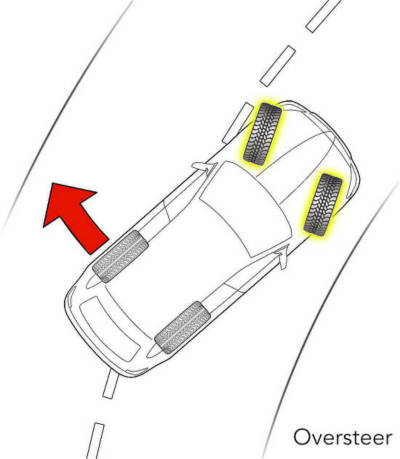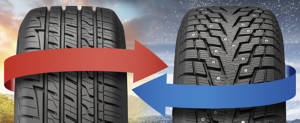When should Winter/Snow Tires be installed?
First things first, when should you install your winter tires?
While many people wait for the first snowfall to think about winter tires, you'll actually be safer on the road (and avoid the crazed rush caused by the first snowstorm) by getting winter or snow tires before the first flurries fall.
Once temps are consistently below 45 degrees, you'll see a massive benefit in driving safety with a set of winter tires. That's why we recommend purchasing and/or installing your winter or snow tires when 45 weather is here to stay.
At this temperature, all-season tires get stiff and start to lose traction. This results in less reliable braking, cornering, and acceleration. If you get in early for your winter tires, you can beat the last-minute rush and be prepared before the snow starts to fall and roads start to ice up.
And if you want to preserve your OE or aftermarket rims, we suggest a custom winter wheel and tire package. Not only will this preserve your stylish summer-ready rims, it will also help you reduce changeover time and tire wear and tear. If that's not a win-win, we don't know what is.
Installing Four Winter/Snow Tires
Winter tires are optimized for winter conditions and temperatures at or below 45 degrees. By replacing all four tires with winter tires, you're enhancing the traction of both the front and the rear of the vehicle. This improves the vehicle's handling and provides more safety in winter conditions.
When installing only two winter tires on a vehicle, whether they are installed on the front or the rear axle, the handling characteristics of the vehicle will be affected. Regardless of the drivetrain – front-wheel, rear-wheel or even all-wheel drive – the axle with the winter tires would not be working in sync with the opposing axle.
For this reason, America's Tire always recommends installing all four winter tires at once for the best handling in winter conditions.

Installing Two Winter/Snow Tires on the Rear
While installing four new winter tires ensures optimum handling conditions, installing only two can lead to mismatched handling and traction.
It's a common misconception that you only need two winter tires on the vehicle's drive axle. While this may have been true in days past, advances in winter tire tech create such a vast difference in traction that this practice isn't just untrue, it's actually unsafe because having only two winter tires on the drive axle can result in an understeer condition.
Understeer is when your front tires have less grip on the road than the rear tires. This will cause your vehicle not to turn and stop as intended, resulting in little or no control of the vehicle.
That's just one of the many reasons it's best to install all four winter tires at the same time. That said, if you have four winter tires and only need to replace two, we'll install your new winter tires on the rear of the vehicle.

Installing Two Winter/Snow Tires on the Front
On any vehicle, the rear tires typically have less traction than the front tires.
One reason for this is that your vehicle's engine is typically in the front. The weight from your engine will help press the tires down on the road leading to better traction. Another reason your rear tires don't have as much grip as the front: the majority of braking and steering is done with the front tires.
Just imagine how much bigger the difference in grip becomes with a pair of winter tires on the front axle!
The difference is so big, in fact, that installing winter tires on just the front axle results in severe oversteer. Oversteer is when the rear of your vehicle loses traction and swings around sideways. Commonly called "fishtailing", oversteer can lead to a complete loss of control of your vehicle.

To avoid oversteer and understeer, and to give your vehicle the best grip in winter weather, we highly recommend equipping your vehicle with four winter tires.
Winter/Snow Tire Storage
Storing your winter tires is another very important (yet often overlooked) aspect of winter tire care. As with all-season and summer tires, proper storage is very important. The wrong environment can cause serious damage to your tires.
To help your tires see more than one winter, make sure to follow these storage steps:
-
Store tires without a load.
-
Make sure your tires are stored somewhere dark, with little or no direct sunlight.
-
Clean your tires thoroughly before they're stored. If they're mounted, clean the wheels too.
-
Wrap them in airtight plastic bags and store them in a cool, dry, climate-controlled area.
ASK US ABOUT STORING YOUR WINTER/SNOW TIRES!
Many of our stores offer tire storage, making America's Tire your one-stop-shop for all aspects of winter tire service.*
Have more questions about winter tires? We cover tons of winter tire topics, including:
*Winter tire storage availability and cost varies by location.
Ready to get your prepped for winter weather? We've got the winter tires and rims you need to do the job.
Build a Wheel & Tire PackageIf you have any questions or require any assistance, stop by any of our America's Tire locations and we'll get you taken care of! Customers who buy and book online save time in-store!
